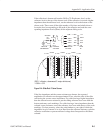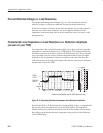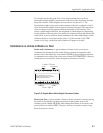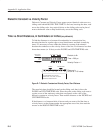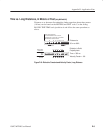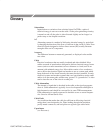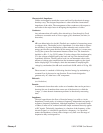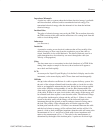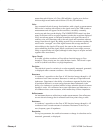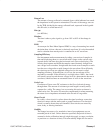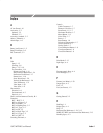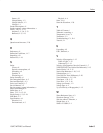
Glossary
1502C MTDR User Manual
Glossary–5
Return Loss
The amount of energy reflected or returned from a cable indicates how much
the impedance in the system is mismatched. The ratio of the energy sent out
by the TDR, divided by the energy reflected back, expressed in the logarith-
mic dB scale, is called return loss.
Rho (r)
(see Millirho)
Risetime
The time it takes a pulse signal to go from 10% to 90% of the change in
voltage.
RMS
An acronym for Root Mean Squared. RMS is a way of measuring how much
deviation there is from a known (or desired) waveform. It is also the method
used to calculate how much power is contained in an AC waveform.
Sampling Efficiency
Our instruments make measurements by taking a succession of samples in
time and displaying them as a waveform with voltage on the vertical scale
(up and down) and time along the horizontal scale (across the display). The
circuitry that captures and holds the samples cannot instantly change from
one voltage level to another. It might take the circuit several samples to settle
in at the new voltage after a rapid change in the waveform. How efficiently
the circuit moves from one sampled voltage level to the next is called
sampling efficiency. If the efficiency is too low, the waveforms will be
smoothed or rounded. If the efficiency is too high (above 100%), the circuit
will actually move beyond the new voltage level in a phenomenon known as
overshoot, which becomes an unwanted source of noise in the waveform.
Series Loss
Conductors all have some DC resistance to the flow of electrical energy
through them. The amount of resistance per unit length is usually nearly
constant for a cable. The energy lost overcoming this series resistance is
called series loss. The series loss must be compensated for when measuring
the return loss or impedance mismatch at the far end of long cables.
Short Circuit
In a cable, a short circuit is a place where the signal conductor comes into
electrical contact with the return path or ground conductor. The electrical
circuit is actually shorter than was intended. Short circuits are caused by
worn, leaky, or missing insulation.
Stability
The change in accuracy of a standard or item of test equipment over an
extended period of time. Unless otherwise specified, the period of time is
assumed to be the calibration interval (might also apply to range, resolution,
or precision as a function of time). The term stability might also be used to



